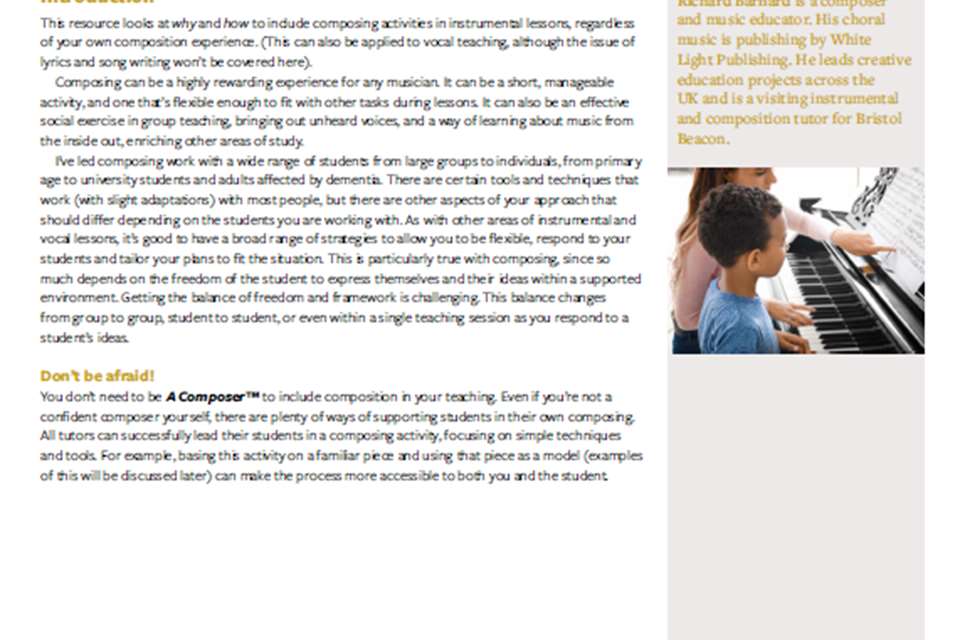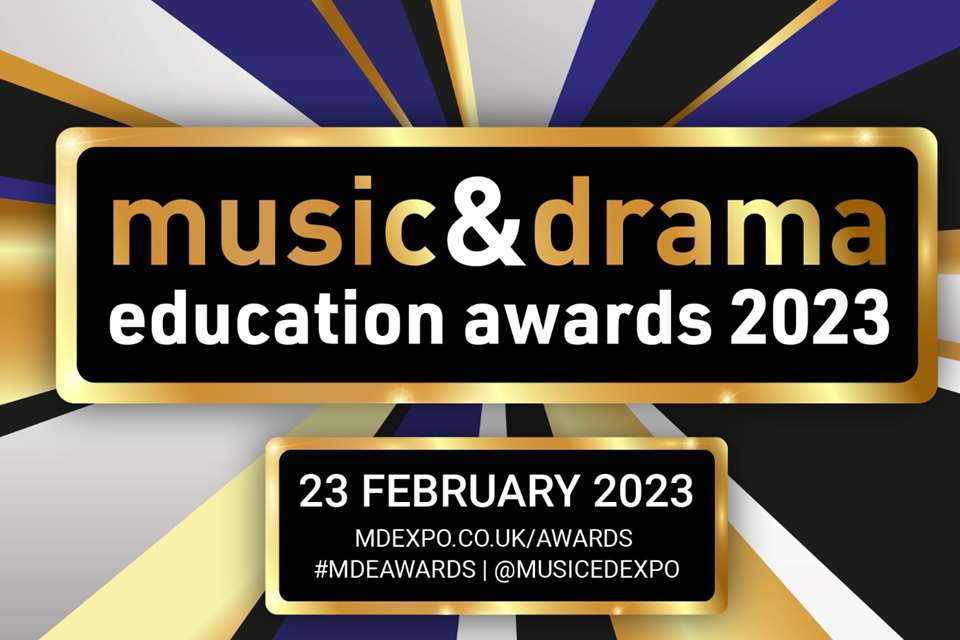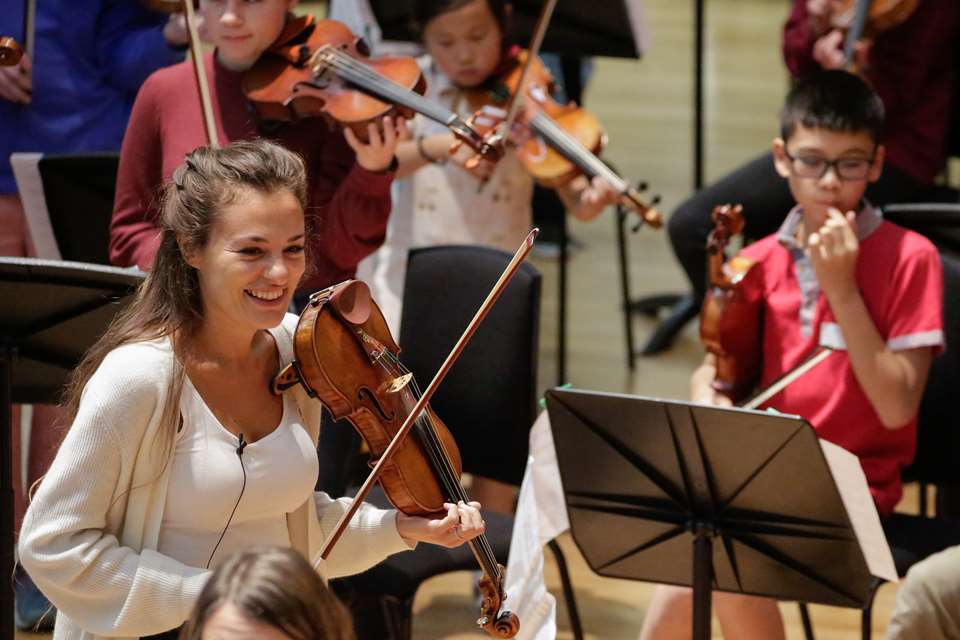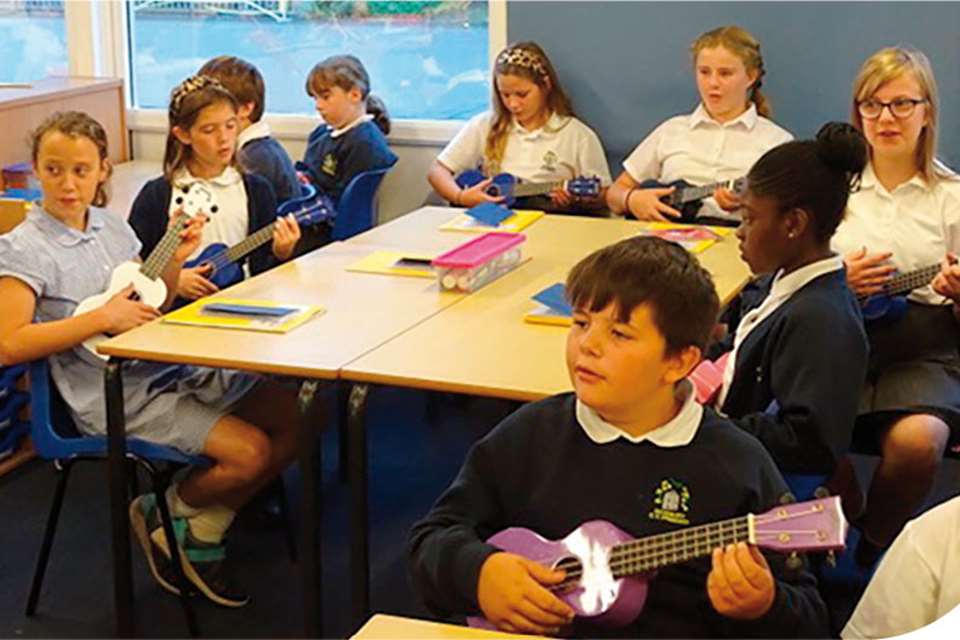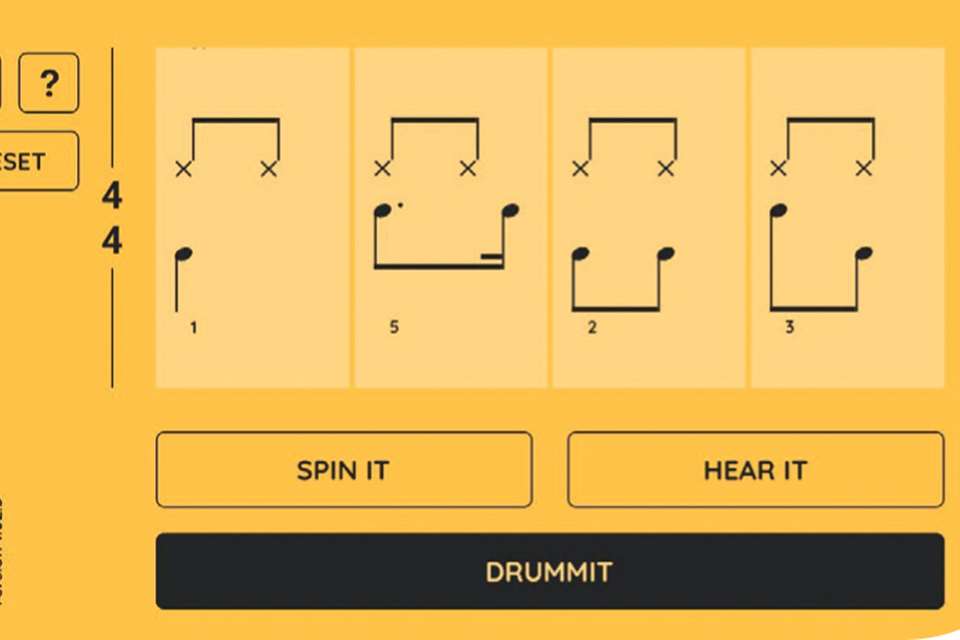Classroom instrumental teaching: First things first
Kay Charlton
Thursday, September 1, 2022
Music educators are often divided over the effectiveness of classroom instrumental teaching, but Wales's and England's recently published national plans for music education make clear that it should be part of a child's music education. An experienced WCET tutor, Kay Charlton offers guidance

Courtesy Bosbury CE Primary School
Classroom instrumental teaching (now broadened from ‘whole class’ instrumental teaching) is here to stay; it says so in the new National Plan for Music Education in England and is enshrined in the new National Plan for Wales as ‘First Experiences’. Both plans also include funding for the purchase of instruments. Crucially, England's NPME states that classroom instrumental teaching should be ‘a key part of the school's curricular music offer’, should be delivered in class time, and that parents/carers should not be charged for it.
Outcomes include being able to:
- develop confidence in instrumental playing
- play a simple melody in an ensemble and to learn it from, for example, staff notation
- create short phrases of new melodic music (if learning a melodic instrument)
- demonstrate knowledge of music from a range of musical traditions
- perform confidently.
The English Plan suggests different models of delivery can be utilised; for example, rather than the whole class learning together, lessons can be delivered in smaller groups, perhaps dividing the class into three. There are already many models of classroom instrumental teaching delivery across the country; in my experience it is definitely easier to support students in smaller groups with more time to hear them play individually – not all tutors can be afforded that luxury, however.
Collaboration and teamwork
There is a recommendation that classroom teachers should ‘participate in the lessons, and support the specialist teacher in enabling pupils to engage fully’. This is the collaborative model that WCET was originally built upon, but I have observed – and taught – many lessons where it doesn't happen. Sometimes instruments are taught during PPA time; sometimes the class teacher is present but otherwise occupied. The support of the class teacher is invaluable – they know each child intimately and undoubtedly their input will keep children focused so that they can fully engage with their instrumental learning. I suspect that some tutors aren't sure how to involve the class teacher – or teaching assistant, if they're lucky enough to have one – but the NPME says that ‘classroom teachers should be involved in the design of the programme and must be aware of pupil progress through it’. This requires good dialogue between tutors and class teachers and may need facilitating by the music hub if it isn't happening naturally. If a class is split into smaller instrumental groups as suggested, teacher participation becomes impossible and instrumental tutors will be teaching groups, unsupported by school staff – a catch-22 situation. The collaborative model also offers great on-the-job musical CPD for the class teacher. If schools and staff really engage with this process, it is a win-win.
Planning for success
Whether or not it is defined in these terms, schools should already have some kind of Music Development Plan, and classroom instrumental teaching should be part of it. Children's prior learning will make a big difference to their musical progress during the instrumental programme. For example, if they have been singing/playing from musical symbols since reception, then using some notation as part of instrumental lessons should be an easy progression.
What does success in classroom instrumental teaching look like? If you know the children, you know what success looks like for them – being unable to produce a clear sound on the instrument but putting down the right fingers at the right time is a great achievement! Know what outcomes you are aiming for and get to know your pupils’ strengths and weaknesses. If the class teacher is playing alongside the children, your class will be inspired and may see that adults can also find learning an instrument challenging.
The Plan suggests that there should be a focus on developing fluency, ‘which may be best achieved through a focus on one instrument, or group of related instruments’. Many programmes currently have successful carousel systems where children try different instruments for a half-term before deciding which suits them best; finding the instrument you're good at can be a lottery – it turns out I was a bit rubbish at the guitar, but not bad once I picked up a trumpet! Practice isn't always possible between lessons, which can make technical progress slow. There will always be a child who simply can't make a sound on the flute/trumpet (insert instrument here) or coordinate hands or fingers enough to achieve fluency, but musical progress is so much more than that. I find that lessons which cover a range of inclusive and creative musical activities have the most positive outcomes – and yes, you can include improvisation and composition from the get-go!
What happens next?
School and Local Music Development Plans should include a progression strategy. A term or year of investment in children's musical education doesn't end there; we want children to continue playing, to join ensembles, and to become our next generation of musicians.
The NPME suggests that tutors provide a report of each pupil's progress, which is another good reason to work with the class teacher. Hearing each child play alone is important, and knowing who they are by name is crucial. Do a musical register and ask each child to respond musically, keeping everyone involved until it's their turn – stamping the pulse, singing a chorus between names, being ready to play – it's all part of being a musician. Look for those showing promise or interest and get them signed up to your continuer's ensemble.
 WCET at Bosbury CE Primary School
WCET at Bosbury CE Primary School
Make sure performances are part of the school's Music Development Plan; be visible in the school and invite parents, as their support is vital. The scrape-y, blare-y, beginner-y sounds they may hear at home are masked as part of a large ensemble, where the overall effect of performing together is empowering. Be sure to perform to the next year group so they feel excited about their upcoming instrumental journey.
The Plan is not statutory, but the intention that schools and hubs should work together to provide ‘broad and high-quality opportunities for all pupils’ is clearly stated. The ambition of the Plan is that schools should expect to see higher levels of interest in instrumental lessons and should proactively support pupils’ progression to further opportunities. Classroom instrumental teaching is such a fantastic opportunity for children to begin their instrumental journey – with planning, collaboration and a creative, open-minded approach to teaching and learning, pupils can be inspired to extend their playing beyond the initial programme and develop a life-long love of music.


